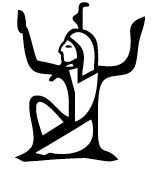- About MAA
- Membership
- MAA Publications
- Periodicals
- Blogs
- MAA Book Series
- MAA Press (an imprint of the AMS)
- MAA Notes
- MAA Reviews
- Mathematical Communication
- Information for Libraries
- Author Resources
- Advertise with MAA
- Meetings
- Competitions
- Programs
- Communities
- MAA Sections
- SIGMAA
- MAA Connect
- Students
- MAA Awards
- Awards Booklets
- Writing Awards
- Teaching Awards
- Service Awards
- Research Awards
- Lecture Awards
- Putnam Competition Individual and Team Winners
- D. E. Shaw Group AMC 8 Awards & Certificates
- Maryam Mirzakhani AMC 10 A Awards & Certificates
- Two Sigma AMC 10 B Awards & Certificates
- Jane Street AMC 12 A Awards & Certificates
- Akamai AMC 12 B Awards & Certificates
- High School Teachers
- News
You are here
When a Number System Loses Uniqueness: The Case of the Maya
The number system used throughout the modern world is a fully place-valued decimal system. This means that we count in groups of ten using nine digits, \(1, 2, 3, 4, 5, 6, 7, 8, 9,\) and a symbol zero, \(0,\) that plays double duty as both a place holder and a number representing "none". Our ten numerals are referred to as the Indo-Arabic (or Hindu-Arabic) numbers since they were developed in India by the 9th century and then transmitted to the Western world via the Arabs. Most notably they appear in the 1202 Liber Abaci (or Book of Calculation) of Leonardo of Pisa (better known as Fibonacci).
In a place-value system, the value of each symbol used is determined by its location in the number. Examples of other place-value systems are the ancient Babylonian cuneiform, ancient Chinese rod numeral, and Mayan systems. The first two systems do not have a place holder; however the Chinese rod numerals are unambiguous due to a very structured style of writing as well as the clever alternating of the horizontal/vertical alignment of the numbers. Examples of non-place-value systems are those of ancient Egypt and Rome. For example, an \({\rm X}\) in Roman numerals represents ten, no matter its location. (Numerous websites are available to learn more about any of the above systems.)
The Babylonian, ancient Chinese, and Maya number systems are additive, meaning that they repeat a symbol to represent larger numbers. For example, the Babylonians used a base 60 number system but with only two symbols, a vertical line for one and a wedge shape for ten that were made with the end of a stylus impressed into wet clay. In the Babylonian system, the value of each place had to be inferred from context since spacing between places was unclear. For example,
![]()
may represent \(13\times 1 = 13\) or \(13\times 60 =780\) or \(10\times 60 + 3\times 1 =603\) or \(10\times 3600 + 0\times 60 + 3\times 1 = 36003\) or .... All three of these systems use abstract or stylized symbols based on a single line segment or dot to represent one. In contrast, the Egyptian system is pictographic. Our favorite example is the glyph of an astonished man to represent one million:

In order to depict larger and larger numbers, the Egyptians and the Romans needed more and more symbols. Any base system having as many numerals as its base does not need to use the additive property to depict all of its numbers.
Pedro J. Freitas (Universidade de Lisboa) and Amy Shell-Gellasch (Beloit College), "When a Number System Loses Uniqueness: The Case of the Maya," Convergence (June 2012), DOI:10.4169/loci003883




